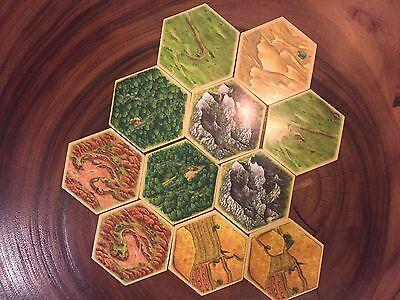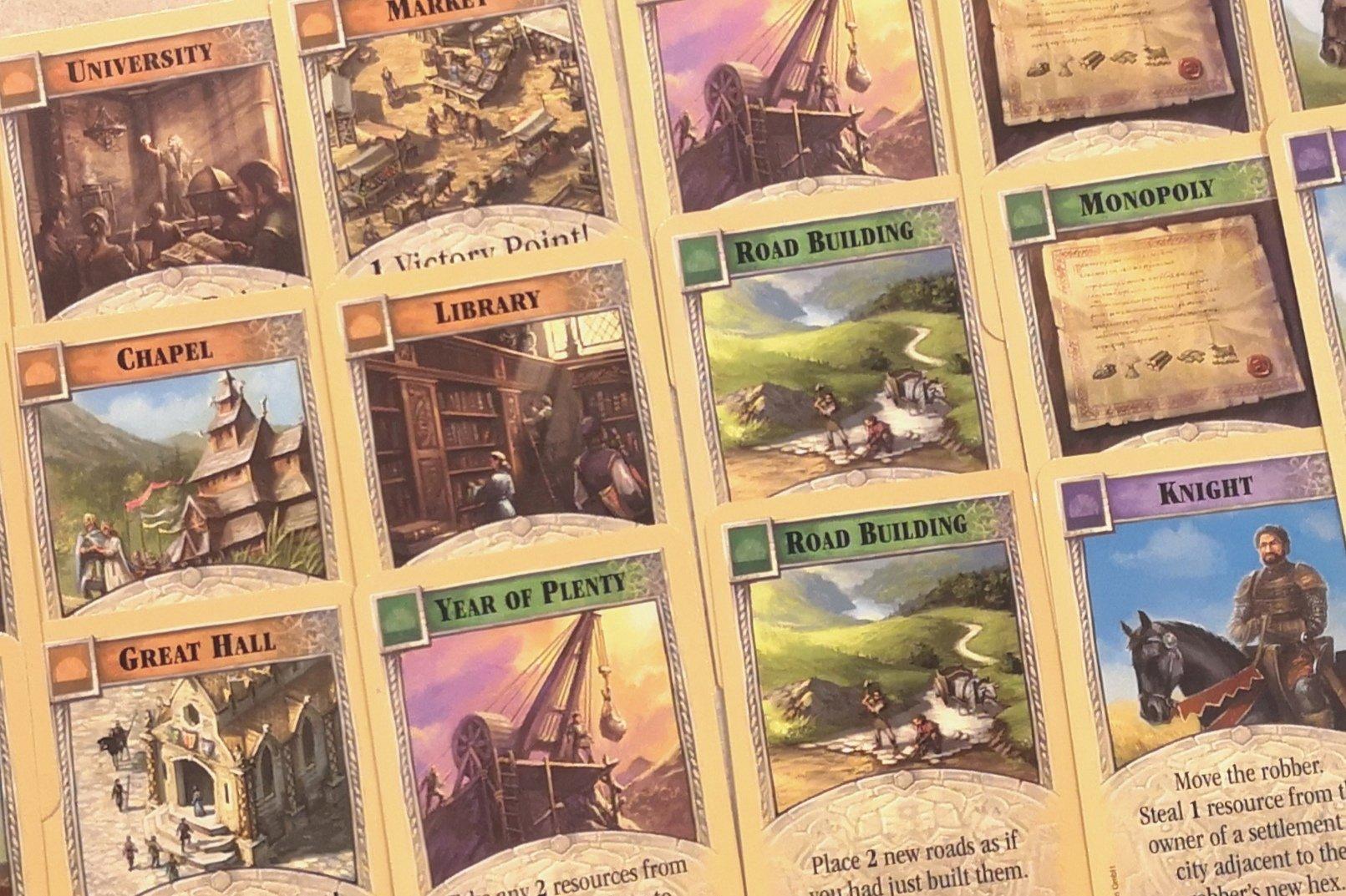Settlers of Catan is a multiplayer board game designed by Klaus Teuber, first published in 1995 in Germany. The resource management game is designed for 3-4 players and requires strategy and negotiation skills.
In Settlers of Catan, players take on the roles of settlers, each attempting to build and develop holdings while trading and acquiring resources. Players gain points as their settlements grow, and the first to reach a set number of victory points wins. Settlers of Catan can best be described as a multi-player game with asymmetry in unequal positions/resources. There are, however, also different strategies within the game, as well as asymmetry in game objects pertaining to the use of resource cards in Settlers of Catan.
With regards to asymmetric resources, terrain in the game is unequal but their impact is hard to measure — hexes contain terrain that are either ore-producing, lumber-producing, grain-producing, or forest producing. Players start at different intersections of the hexes, able to build roads, and able to build settlements, out from their starting points dependent on the resources they acquire by rolling die. For example, a die roll of an “8” would allow all players with access to terrains with an “8” marked on them to acquire one resources card of that terrain. The premise of this game where players begin as settlers makes this intentional decision for imbalance quite interesting — in this case, similar to the way The Great Dalmutti, mentioned in the article, intentionally casts players in unequal roles as a way of showing life isn’t fair, Settlers of Catan similarly casts players into unequal positions. How resources are weighted, however, is more subjective, more akin to Rock Paper Scissors with resources maintaining an intransitive relationship. Ore is useful for building cities, while lumber is required to build settlements, while brick is required to build roads, and all building requires grain.
With regards to the different strategies, strategies in Settlers of Catan include building out settlements as to multiply the number of resources from resource cards touching settlements, to aim for trading ports and certain types of resource cards (ore-producing resource cards, for instance), and to build roads to cordon off oponents from taking your resource cards.
To balance game objects, Settlers of Catan utilizes transitive and intransitive techniques to even out resources. As a transitive technique, Settlers of Catan utilizes trade ports to maintain an explicitly outlined ratio with which to trade resources. For instance, during my gameplay, I acquired a maritime port that allowed me to trade grain for lumber at a 2:1 ratio, directly reducing costs/benefits of resources to being traded for one another. There is a catch, however, which is that resources and value of the trade depends on which settlements the player has access to. For instance, during my gameplay, I had access to plenty of grain, which gave me a lot of grain to trade with, which would make a 2:1 trade of grain for lumber extremeely valuable for me since I had surplus of grain. The trade ports also functioned as an intransitive technique, where there is no direct cost/benefit in trade persay, but there is a relationship between game objects themselves.
Finally, there are also development cards that seek to even out disadvantages between players, allowing players to steal resources from one another, gain points from tasks like building the longest continuous road, or even building the largest amount of settlements. Development cards reward different stategies, like building roads and settlements.
I thoroughly enjoyed Settlers of Catan, one of my favorite games, since it rewards different strategies, and there is an element of luck and chance injected into the game through die rolls which makes each game play a unique experience dependent on the die rolls you and other players have access to, and dependent on the different strategies you pursue. I chose to pursue a strategy of aining access to trade ports and then building settlements, which won me a development card for the longest road, and allowed me to cut other players off from resources (an epic win!).






